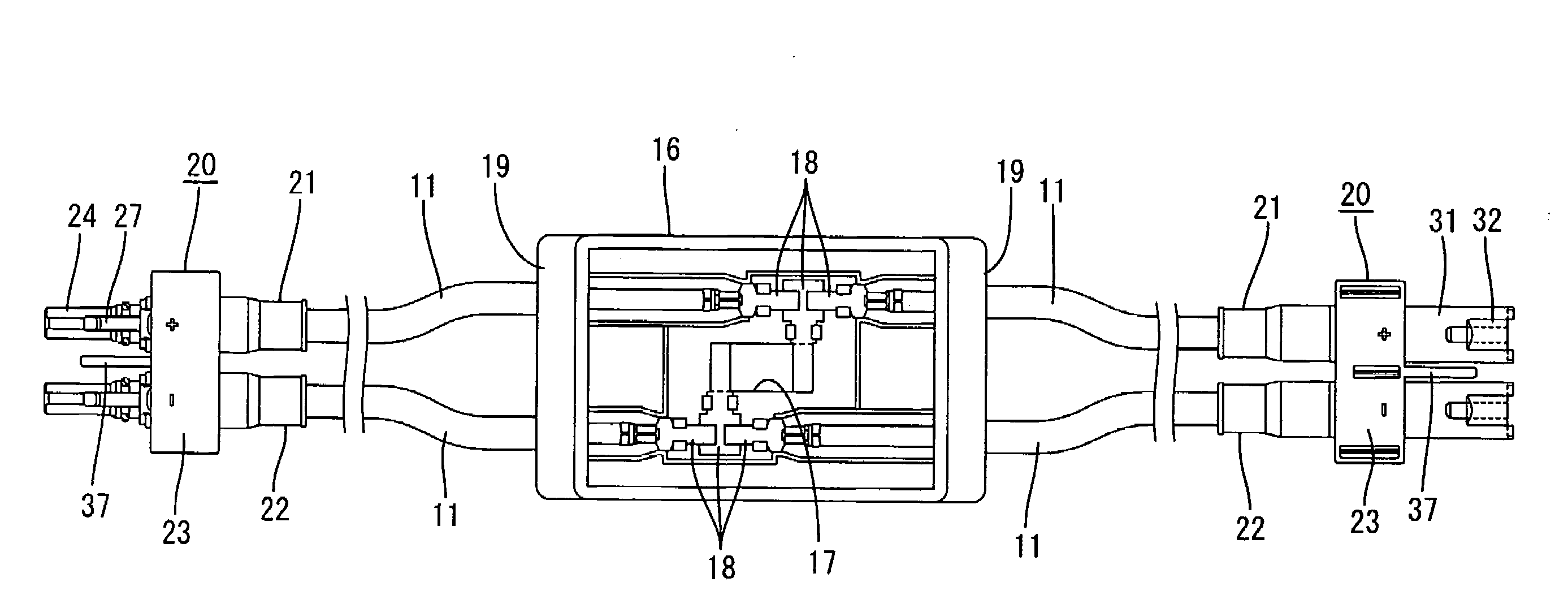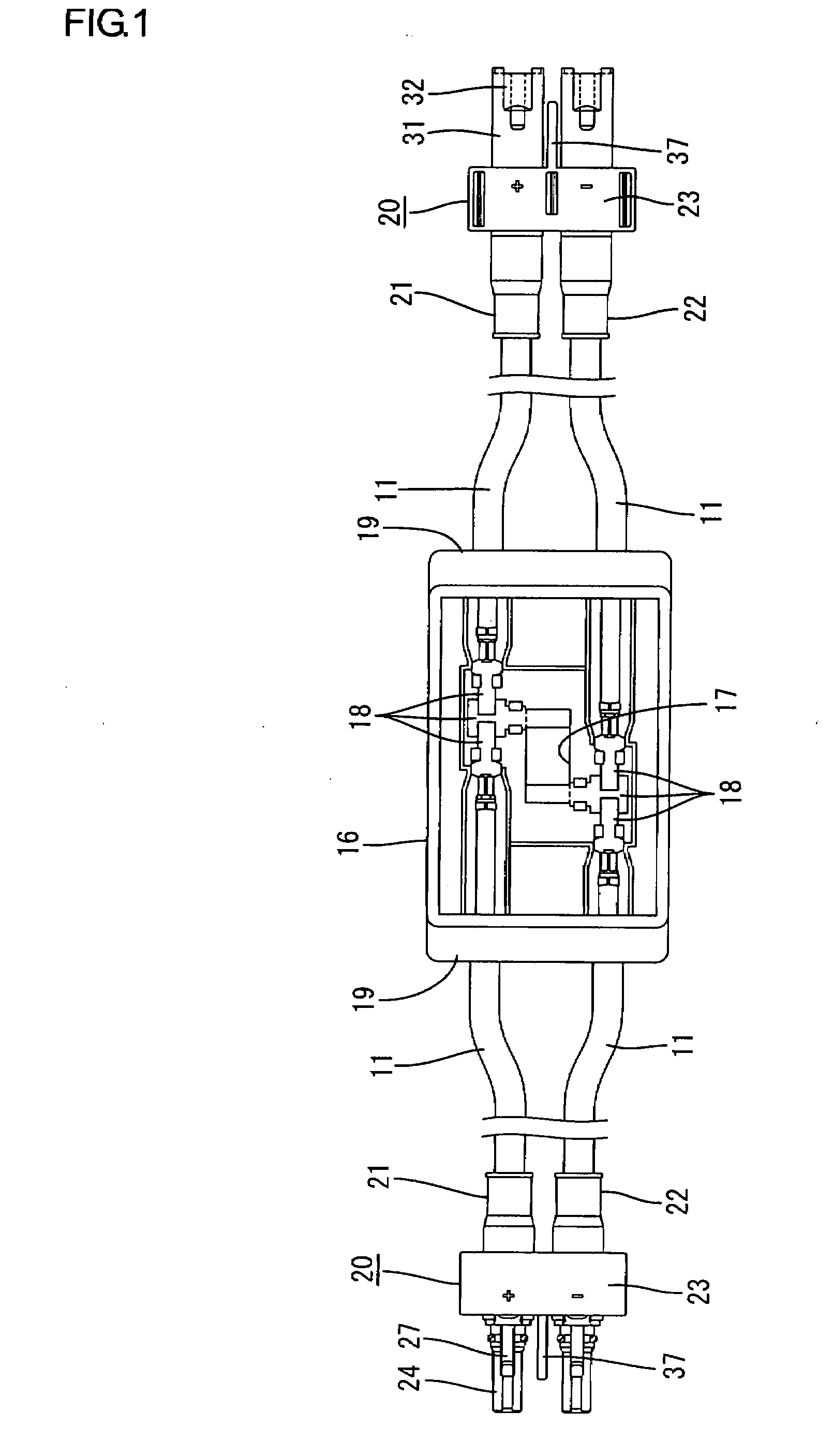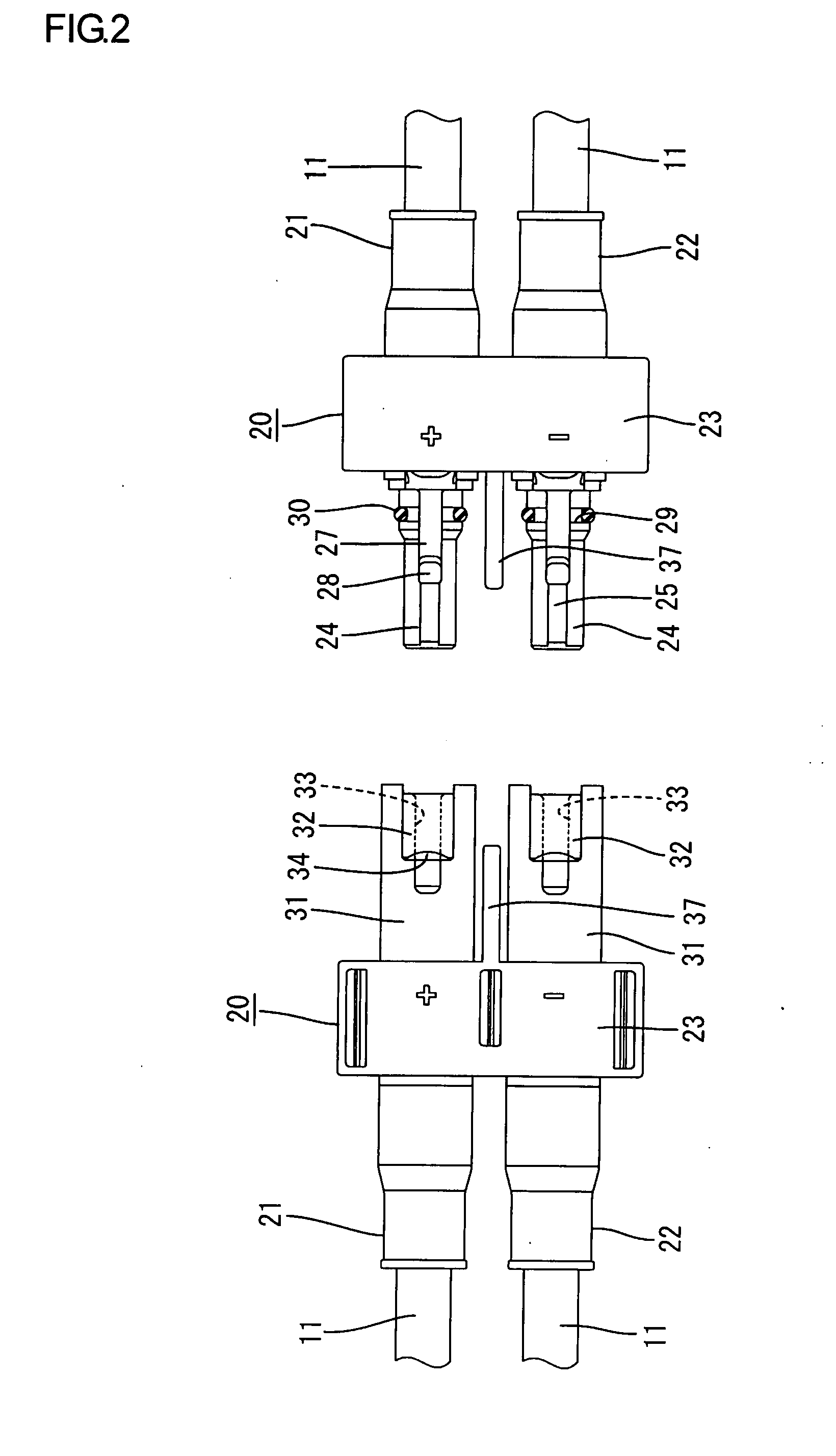Solar Cell Module Connector
a solar cell and module technology, applied in the direction of coupling device connection, pv power plant, coupling device details, etc., can solve the problem of erroneous connection between the positive and negative terminals in each group, and achieve the effect of preventing inverse connection
- Summary
- Abstract
- Description
- Claims
- Application Information
AI Technical Summary
Benefits of technology
Problems solved by technology
Method used
Image
Examples
embodiment 1
[0054]Embodiment 1 of the present invention will be described with reference to FIGS. 1 to 8. In this embodiment, two pairs of positive and negative cables 11, i.e., one pair of positive and negative cables 11 and another pair of positive and negative cables 11, are led out by dividing a pair of positive and negative terminals from a solar cell module 10, and a dipole connector 20 having terminals 15 connected to ends of the cables 11 led out is integrally formed. A plurality of solar cell modules 10 are disposed in matrix form, i.e., in alignment with each other in row and column directions, and are connected in parallel with each other.
[0055]A terminal box 16 is attached to the back surface (the surface opposite from the glass surface) of the solar cell module 10, as shown in FIG. 1. A pair of positive and negative leads (not shown) from the solar cell module 10 are led into the terminal box 16 through an opening 17. Ends of the leads are connected to pairs of positive and negativ...
embodiment 2
[0070]Embodiment 2 of the present invention will be described with reference to FIGS. 9 to 12. The forms of the dipole connectors 20 in Embodiment 2 differ from those in Embodiment 1. In other respects, Embodiment 2 is substantially the same as Embodiment 1. A redundant description in relation to the description of Embodiment 1 will not be made. Structural portions identical or corresponding to those in Embodiment 1 are indicated by the same reference numerals.
[0071]In Embodiment 2, the forms of the positive connector 21 and the negative connector 22 constituting each dipole connector 20 are made different from each other to prevent inverse connection between the two dipole connectors 20 disposed between each adjacent pair of solar cell modules 10. More specifically, a construction described below is provided. As shown in FIG. 9 on the right-hand side and in FIG. 11, the protuberant portions 26 and the lock portions 27 in Embodiment 1 are formed on the positive connector 21 on the s...
embodiment 3
[0073]Embodiment 3 of the present invention will be described with reference to FIGS. 13 to 16. The form of clamps 23 in the dipole connectors 20 in Embodiment 3 differs from that in Embodiment 1. In other respects, Embodiment 3 is substantially the same as Embodiment 1. Structural portions identical or corresponding to those in Embodiment 1 are indicated by the same reference numerals.
[0074]Embodiment 3 has the same positive connectors 21 and negative connectors 22 as those in Embodiment 1, and pairs of connectors 21 and 22 are fitted in clamps 23 to prevent inverse connection between two dipole connectors 20 disposed between each adjacent pair of solar cell modules 10. That is, as shown in FIG. 13, the clamp 23 on the plug side and the clamp 23 on the socket side in the clamps 23 in Embodiment 3 are identical to each other, and each clamp 23 has a holding portion 41 on the positive connector 21 side for holding the positive connector 21, and a holding portion 42 on the negative co...
PUM
 Login to View More
Login to View More Abstract
Description
Claims
Application Information
 Login to View More
Login to View More - R&D
- Intellectual Property
- Life Sciences
- Materials
- Tech Scout
- Unparalleled Data Quality
- Higher Quality Content
- 60% Fewer Hallucinations
Browse by: Latest US Patents, China's latest patents, Technical Efficacy Thesaurus, Application Domain, Technology Topic, Popular Technical Reports.
© 2025 PatSnap. All rights reserved.Legal|Privacy policy|Modern Slavery Act Transparency Statement|Sitemap|About US| Contact US: help@patsnap.com



